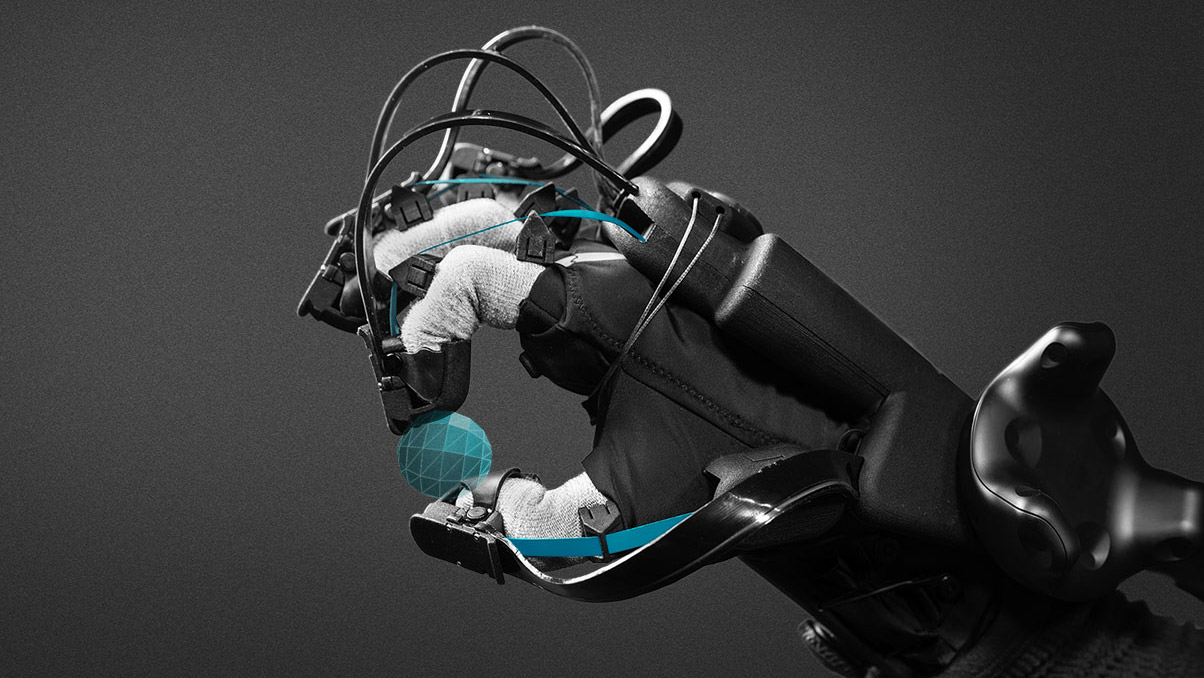HaptX to Develop Full-Body Haptic Suit After Securing $1.5 Million Grant
The haptics company HaptX, together with Virginia Tech and the University of Florida have won a $1.5 million grant from the National Science Foundation (NSF) to build a full-body ‘robotic exoskeleton’ for VR, or simply full-body haptics.

The company was founded in 2012 and is best known for its industrial microfluidic haptic gloves. So far, the company has developed and productized haptic gloves for virtual reality and robotic telepresence and its products have already been deployed in various enterprise use-cases. In the recent years after it turned practical, HaptX went on to raise significant sums in funding rounds pegged on its growing enterprise business.
Now the haptic company is back in the headlines with a new round funding, this time in the form of a grant, and a bold quest to build a futuristic full-body haptic suit.
With the new funding, HaptX, in collaboration with the two partner research institutions, now aims to develop full-body immersion where digital sensations can be convincingly replicated in real-life. The team will leverage HaptX’s microfluidic technology for use with a robotic exoskeleton.
The $1.5 million grant forms part of the NSF’s National Robotics Initiative which is a four-year project known as ForceBot. The project aims to simulate virtual objects with a very high-level of realism for different kinds of tasks in the virtual environments. The force-feedback would enable users to feel various kinds of sensations in the virtual environment including weight, shape along with the texture of virtual objects. Users will also be able to move naturally inside a virtual terrain and be able to use robotic avatars to manipulate objects. The exoskeleton in ForceBot is being developed for commercial and enterprise applications.
The grant will be distributed between the players, each of which is to contribute individual components for the ForceBot exoskeleton. The final Intellectual Property will be deployed in commercial products.
The project leverages both virtual reality immersion and robotics to create a full-body haptic exoskeleton rig. The purpose of the rig is to generate force feedback on the human body for VR users.
HaptX’s role in the project will be to find commercial uses for the rigs. The HaptX Gloves will also be used in the rig.
The Realization of a Dream
According to HaptX CEO Jake Rubin, the company has been working incrementally towards its original vision of building a full-body force-feedback exoskeleton, building “piece by piece” and doing R&D in every segment of the full system while at the same time distilling innovations that promise the most short-term commercial potential. With the grant, things are finally coming full circle for HaptX and the exoskeleton will be used to create product prototypes for the future.
https://virtualrealitytimes.com/2020/09/29/haptx-to-develop-full-body-haptic-suit-after-securing-1-5-million-grant/https://virtualrealitytimes.com/wp-content/uploads/2020/01/HaptX-VR-Gloves-delivers-a-powerful-force-feedback-600x394.pnghttps://virtualrealitytimes.com/wp-content/uploads/2020/01/HaptX-VR-Gloves-delivers-a-powerful-force-feedback-150x90.pngBusinessHapticsHardwareThe haptics company HaptX, together with Virginia Tech and the University of Florida have won a $1.5 million grant from the National Science Foundation (NSF) to build a full-body ‘robotic exoskeleton’ for VR, or simply full-body haptics. The company was founded in 2012 and is best known for its industrial...Sam OchanjiSam Ochanji[email protected]EditorVirtual Reality Times - Metaverse & VR
